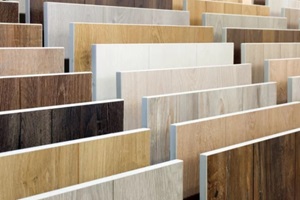 Multiple types of wood are used for residential and commercial construction every day. From the supportive structures that form the skeleton of the building to decorative paneling that accents a client’s vision, wood is an essential part of buildings, both large and small.
Multiple types of wood are used for residential and commercial construction every day. From the supportive structures that form the skeleton of the building to decorative paneling that accents a client’s vision, wood is an essential part of buildings, both large and small.
However, the appeal of wood goes beyond its sturdiness or aesthetic notions. Fire-retardant lumber serves an important purpose: to keep people, their possessions, and their dwellings safe.
Here is an overview of the science behind fire-retardant wood, including how it’s made, what its chemical treatment is made of, and how it is labeled once it is stocked on shelves for use.
What Fire Retardants Are Made Of
Fire-retardant treated wood slows the spread of flames and inhibits smoke production, giving people more time to escape a building when fire poses a threat. As natural wood burns easily, chemicals must be applied to the wood to give it these inhibitory properties.
Fire-retardant chemicals are typically made of salts (both organic and inorganic) and a proprietary mixture of chemicals based on which company is making the wood.
The formula for fire-retardant wood varies depending on how it is intended to be used. Lumber intended for outdoor use must include chemicals resistant to water so they do not leach out of the wood when exposed to rain, snow, or humidity. Wood treated for interior use does not have these qualities.
How Wood Is Made Fire Retardant
Fire retardant chemicals can be applied to wood by coating it or through a pressure impregnation process. When coated, the fire inhibitors are sprayed or brushed onto the wood surface, and then allowed to dry over multiple days (or placed in a drying machine).
This type of fire-retardant wood can be less expensive than other alternatives. However, building codes do not allow the use of fire retardant coated wood for many applications.
Since the inhibitor is applied only to the outside of the wood, scratches, cracks, peeling, or other damage can expose untreated wood, rendering the fire-retardant properties less effective.
This is why many applications require the use of pressure impregnated fire retardant treated wood. First, a piece of wood is placed in a retort which is a specialized cylinder that creates a powerful vacuum. This vacuum extracts the moisture from the wood cells leaving empty space.
Then, as the retort is re-pressurized, the fire-retardant chemicals are released into the cylinder and forced into these now unoccupied spaces throughout the wood. Wood treated in this manner will retain its fire retardant properties regardless of whether it has been scratched or cracked.
Understanding FR Wood Labeling
Each piece of FR lumber must be labeled according to international standards. Being able to read this label is the first step in choosing wood that is ideal for your project. Each piece of wood will include the following information:
- The brand, including the product’s specific name and the company logo
- Identifying information for the company that treated the wood
- The type of wood that was treated
- How the wood was dried after it was treated
- Information on the agency that inspected the wood after treatment, including their name and logo
- The flame spread and smoke developed index rating; these numbers indicate how effective the wood is at mitigating flame spread and creating smoke when it burns
- Information on the standards and regulations with which the wood complies
Learn More About Fire-Retardant Wood from Professionals
Curtis Lumber & Plywood, founded in 1957, is an independently owned and operated wholesale lumber dealer exclusively serving premier lumber retailers throughout the mid-Atlantic and Southeast regions of the United States.
Based in Northern Virginia, we specialize in fire-retardant and preservative treated lumber and plywood for both indoor and outdoor applications.
If you are a lumber retailer and have questions about plywood or treated wood products or need to place an order by the trailer load, unit, or piece, contact Curtis Lumber & Plywood at 703-552-5778.

